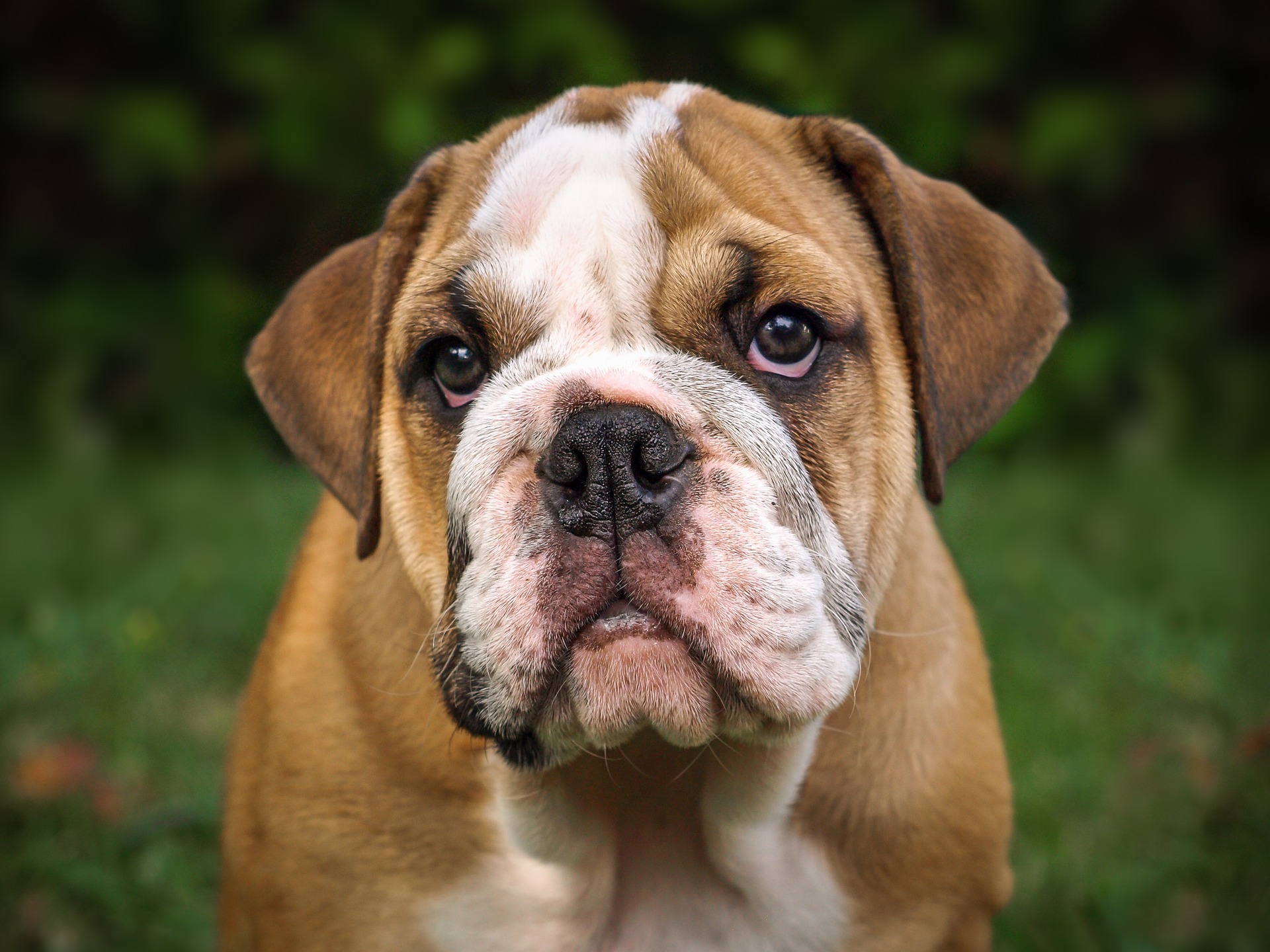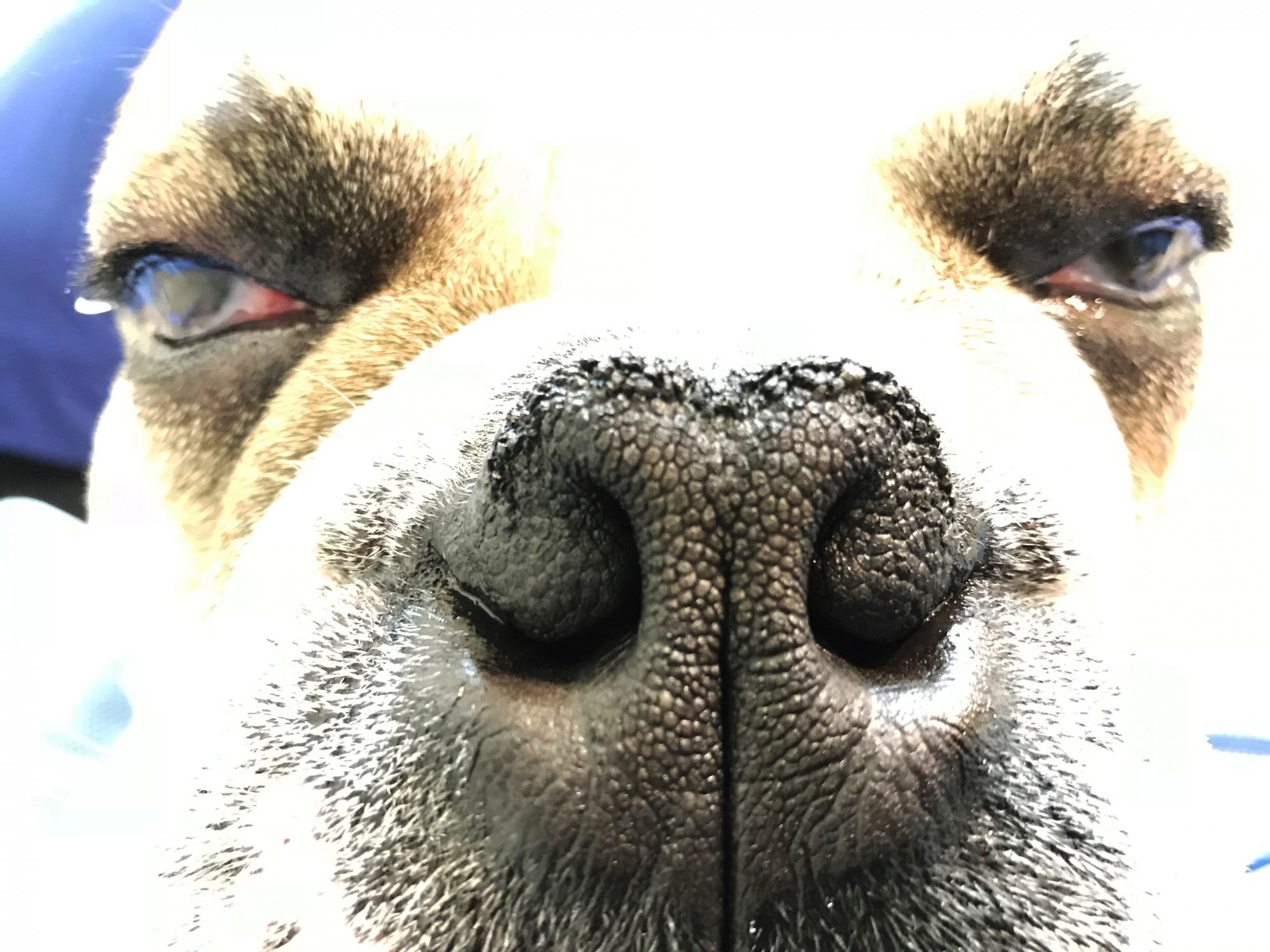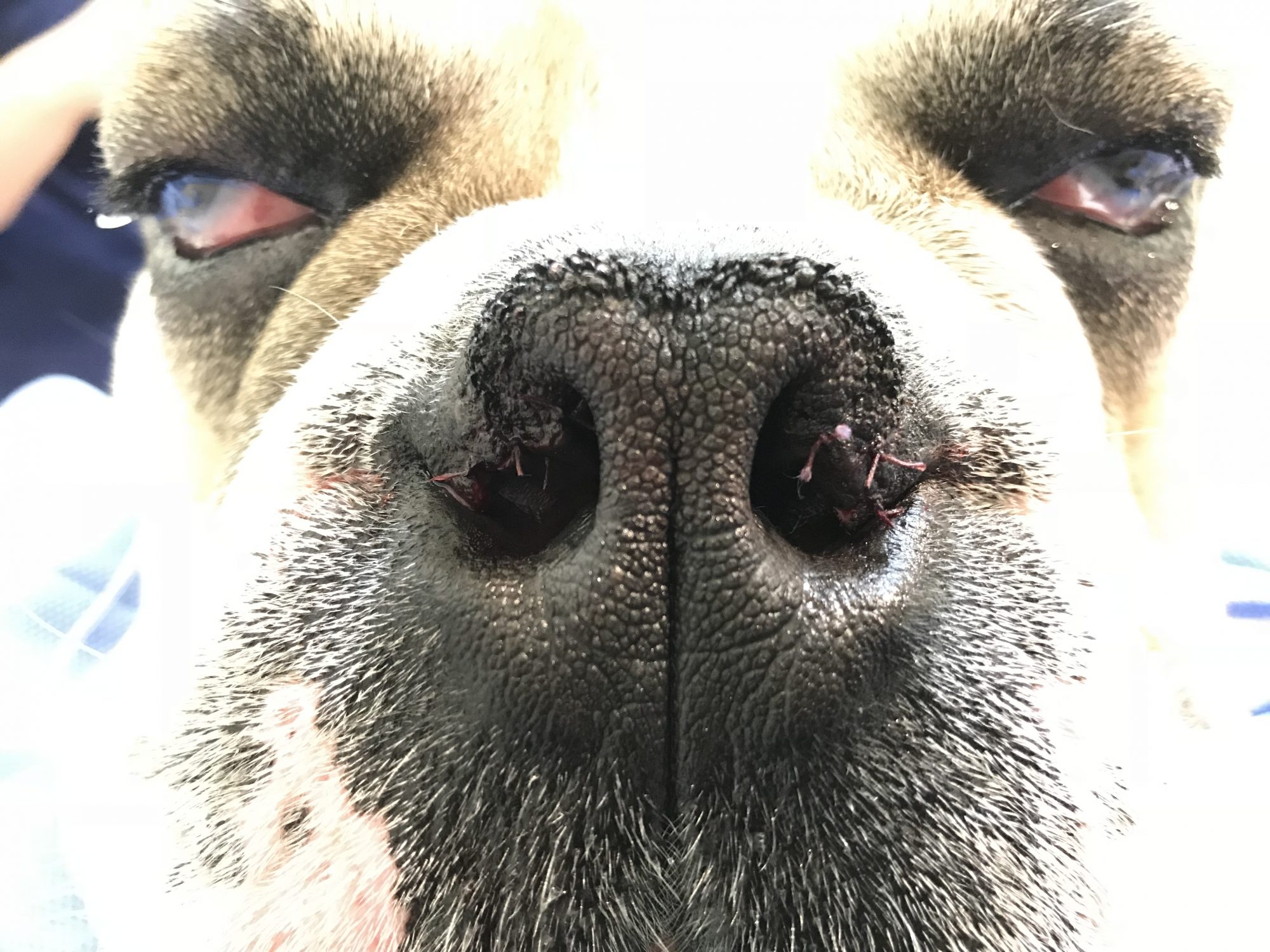Dr. Phil Zeltzman’s Blog
Why did Phoebe need a nose job?
Phoebe is a 3 year old bulldog who was struggling to breathe. Her breathing was very loud and harsh. She couldn’t function without panting. She snored while sleeping. Was easily overheated.
Things got progressively worse and she was nearly suffocating. She was taken to the emergency clinic where she was sedated to place a breathing tube to allow her to calm down, lower her temperature and get her oxygenation up to normal.

All Bulldogs (French, English), Boston Terriers, Pekinese, Boxers and Pugs are called brachycephalic breeds (which means “short skull”). They have a short snout and a flat face. Not all brachycephalic breeds have brachycephalic syndrome, but it should be suspected until proven otherwise.
Brachycephalic syndrome usually has three parts:
. An elongated soft palate, which means that the back of the roof of the mouth is so long that it covers the opening to the windpipe.
. Saccules are fleshy structures at the opening of the airway. When brachycephalic breeds have difficulty breathing, over time, the saccules are mechanically pulled out into the airway.
. Stenotic nares are smaller nostrils than normal, which again prevents getting enough oxygen.

Notice the tiny openings before surgery
There is at least one more issue: Bulldogs, in particular, have a tiny windpipe. There is nothing we can do about it, but it certainly doesn’t help these dogs breathe.
We can however fix all 3 issues mentioned above.
Phoebe needed all 3 repaired:
. Her elongated soft palate was shortened.
. Her “everted” saccules were removed.
. Her almost non-existent nostrils were widened.

Notice the much wider nostrils after surgery
Some surgeons recommend doing a nose job on brachycephalic puppies as early as 3 to 4 months of age. Why so young? Because we hope that if we fix the nose at that age, and the dog doesn’t struggle to breathe, the soft palate and saccules may remain pretty normal.
So we feel that it’s better to widen the nostrils at a young age, which is not very invasive, than to do the full 3 surgeries at a later age. At that point, there are many other additional changes that we simply cannot repair.
While the pup is under anesthesia, we also recommend doing a spay or a castration. This is a great way to prevent spreading the bad genes to future generations, among many other benefits.
Phoebe recovered very well after surgery. She was able to breathe much better by day and stopped snoring at night. Ironically, it also helped her owners sleep better at night.
Phil Zeltzman, DVM, DACVS, CVJ, Fear Free Certified

Dr. Phil Zeltzman is a traveling veterinary surgeon in Pennsylvania & New Jersey. An award-winning author, he loves to share his adventures in practice along with information about vet medicine and surgery that can really help your pets. Dr. Zeltzman specializes in orthopedic, neurologic, cancer, and soft tissue surgeries for dogs, cats, and small exotics. By working with local family vets, he offers the best surgical care, safest anesthesia, and utmost pain management to all his patients. Sign up to get an email when he updates his blog, and follow him on Facebook, too!

